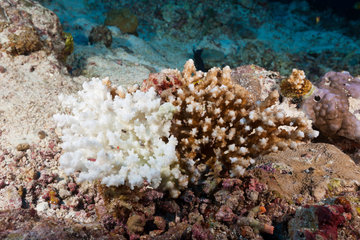Spacewalk for Icarus
Antenna for Russian–German experiment installed on International Space Station
On 15 August 2018, the two Russian cosmonauts Sergei Valeriyevich Prokopyev and Oleg Germanovich Artemyev unfolded the Icarus antenna on the International Space Station (ISS). This was the highlight of their extravehicular activity, which saw them carry out work on the exterior of the Russian Zvezda module for several hours. The two colleagues were supported in their work by the German astronaut Alexander Gerst, who monitored the activity from inside the station. The antenna’s installation marks the completion of the International Cooperation for Animal Research Using the Space (Icarus) system of the Max Planck Institute for Ornithology, the Russian space agency (Roscosmos) and the German Aerospace Center (DLR) Space Administration. Icarus will allow the worldwide tracking of all kinds of animal migration flows and will be brought into service over the coming days and weeks.

With the deeper knowledge provided by the Icarus experiment, scientists in Russia and Germany hope to be able to derive new insights into the life and environment of animals, as well as their interactions with humans. “On their journey south, storks often rest near locust breeding grounds on the southern edge of the Sahara. By doing so, the birds show us precisely where these swarms of insects are located.

Action can therefore be taken to tackle the pest infestations, and famines can be prevented,” says Martin Wikelski, scientific head of the Icarus project at the Max Planck Institute for Ornithology in Radolfzell. His Russian colleague Grigori Tertitski, project leader at the Russian Academy of Sciences’ Institute of Geography, is already eagerly awaiting the chance to learn more about the migratory paths of small birds from east to west. “Some of the birds contract bird flu in East Asia. On their migration through the territory of the Russian Federation, they can then infect other animals. Knowing more about this would be very useful,” says the scientist.
The technology on board the ISS consists of the Icarus antenna and a computer to control it. On the ground, small radio transmitters known as tags are the stars of the show: these thumbnail-sized devices weigh just five grams and can therefore be attached to smaller animals, such as songbirds, without altering their behaviour. The tags gather data on acceleration, ambient temperature and orientation relative to the Earth’s magnetic field. They also record the animal’s route with the help of satellite navigation data. All of this takes place in an economical low-energy mode.
German-Russian cooperation

However, the tags calculate the time at which the ISS will be flying overhead and then spring into “full life”: they send the recorded data to the space station, receive new orbital data from the ISS and can be reprogrammed. In the process, the antenna in space can receive the data for whole flocks – that is, for several hundred birds – at the same time. “The Icarus project is a successful example of the excellent Russian–German collaboration on the scientific use of the ISS,” emphasises Johannes Weppler, project manager at the DLR Space Administration. The two sides have now been collaborating on the project’s implementation for over five years. “We’re proud to have been able to incorporate Russian experience with the operation and construction of experiments on the ISS into Icarus. At the same time, we’re giving our scientists the opportunity to establish themselves as world leaders in this area of research,” says Vasiliy Savinkov, project leader at Roscosmos. “It’s also exciting to consider possible future applications of the Icarus technology, such as tracking freight containers to make their transport more reliable or locating chipped pets.”
Icarus is a collaboration between the Max-Planck-Gesellschaft, the Russian State Corporation for Space Activities (“Roscosmos”) and the DLR Space Administration, which is supporting the project with funding from the Federal Ministry for Economic Affairs and Energy (BMWi). The tags were developed by the German companies Rohde & Schwarz INRADIOS GmbH in Dresden and I-GOS GmbH in Immenstaad. The Icarus antenna and the on-board computer were designed and built by SpaceTech GmbH (Immenstaad) with support from the Russian industrial partner RSC “Energia” (Korolev).















